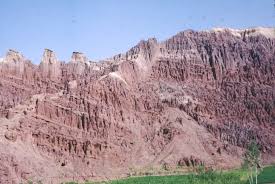Often overshadowed by conflict and turmoil, Afghanistan possesses a rich cultural tapestry intricately woven with music.
The musical landscape of Afghanistan, particularly in its capital, Kabul, is a vibrant expression of the nation’s diverse ethnicities, traditions, and histories.
From ancient folk songs to contemporary pop music, Kabul Rocks with sounds that reflect its people’s resilience and spirit. This article embarks on a journey through Afghanistan’s musical landscape, exploring its history, cultural significance, and the artists who continue to shape its sound in the modern era.
Historical Context of Afghan Music
To understand Kabul’s current musical landscape, it is essential to delve into the historical context of Afghan music. Afghan music’s roots can be traced back to ancient civilizations, where it served as a means of storytelling and cultural expression. Historical texts suggest that music was an integral part of Afghan society long before the rise of prominent empires like the Persian and Maurya empires.
Afghanistan’s rich musical traditions are influenced by various ethnic groups, including Pashtuns, Tajiks, Hazaras, and Uzbeks. Each group brings its own unique musical styles and instruments to the fore. For instance, the Pashtuns are known for their traditional ” lanai poetry, while Tajiks contribute beautifully intricate melodies through instruments like the “rubab” and “dutar.”
During the 20th century, Afghanistan saw a blend of traditional and modern musical influences, thanks partly to the increasing exposure to global music genres. The advent of radio and television introduced Afghans to Western music styles, creating a melting pot of sounds that would define the nation’s music scene. However, the political upheavals and wars that plagued Afghanistan in the late 20th century posed significant challenges for musicians and the preservation of their art.
The Impact of War on Music
The Soviet invasion of Afghanistan in 1979 marked a turning point in the nation’s musical history. The war not only devastated the country but also severely restricted artistic expression. Many musicians fled to neighboring countries, and those who remained often faced censorship and persecution. Traditional music, a cornerstone of Afghan culture, was suppressed, and musicians struggled to keep their art alive amid the chaos.
The rise of the Taliban in the 1990s further complicated the landscape. The regime imposed strict laws that banned music and other forms of art, viewing them as un-Islamic. As a result, many musicians went underground, performing in secret or leaving the country altogether. Despite these challenges, the spirit of Afghan music persevered, and underground musicians found ways to keep the tradition alive, using music as a form of resistance against oppression.
The Resurgence of Music in Post-Taliban Afghanistan
With the fall of the Taliban regime in 2001, a renaissance of Afghan music began to emerge. Musicians who fled the country returned, bringing a wealth of experience and new influences. The Afghan music scene flourished, with concerts, festivals, and cultural events sprouting up in Kabul and other major cities.
This resurgence was characterized by a newfound freedom of expression, allowing artists to explore various genres, from traditional folk music to contemporary pop and hip-hop. One of the most significant milestones in this revival was the establishment of the Afghanistan National Institute of Music (ANIM) in 2010. Dr. Ahmad Sarmast founded ANIM to preserve traditional Afghan music while introducing students to international music genres.
ANIM has become a beacon of hope for aspiring musicians, providing them access to high-quality training and instruments. The institute’s students have gone on to perform internationally, showcasing the beauty and richness of Afghan music to audiences around the world.
The Diversity of Afghan Musical Genres
Afghan music is incredibly diverse, with each ethnic group contributing its distinct styles and instruments. This section explores some of the prominent musical genres that shape Kabul’s soundscape.
- Traditional Afghan Music
Traditional Afghan music is rooted in the country’s rich cultural history. Instruments such as the rubab, dutar, and tabla are central to Afghan folk music, often accompanying poetic recitations. Traditional music usually tells stories of love, loss, and the beauty of the Afghan landscape.
The “ghazal” is a popular poetic form in Afghan music, characterized by its lyrical beauty and emotional depth. Many artists draw inspiration from classical Persian poetry, blending it with traditional melodies to create a unique sound.
- Pop Music
Afghan pop music gained immense popularity in the post-Taliban era, particularly among the youth. Artists like Farhad Darya, Aryana Sayeed, and Naghma have captured the hearts of millions with their catchy tunes and modern sound. Afghan pop often incorporates Western influences, blending traditional melodies with contemporary beats.
The rise of social media has significantly influenced the popularity of Afghan pop music, allowing artists to reach a wider audience both domestically and internationally. Music videos on platforms like YouTube showcase the vibrant culture of Afghanistan, featuring colorful clothing, traditional dance, and stunning landscapes.
- Hip-Hop and Rap
Hip-hop and rap have emerged as powerful forms of expression for Afghan youth in recent years. Artists like Hameed Raza and Afganshah use their music to address social issues, personal struggles, and the desire for change. Hip-hop’s raw and unfiltered nature allows these musicians to connect with their audience on a deeper level.
Afghan hip-hop often features lyrics in Dari and Pashto, reflecting the realities of life in Afghanistan. This genre has become a voice for the younger generation, allowing them to express their hopes and frustrations in a rapidly changing society.
- Fusion Music
Fusion music is another exciting aspect of Afghanistan’s musical landscape. Artists often blend traditional Afghan sounds with elements from other cultures, creating innovative and unique compositions. This genre has gained traction, with musicians experimenting with different instruments and styles.
One notable example is the collaboration between Afghan musicians and international artists. Projects like “The Afghan Music Project” bring together musicians from various backgrounds, resulting in captivating performances celebrating cultural exchange and understanding.
Notable Afghan Musicians and Their Contributions
Afghanistan has produced numerous talented musicians who have significantly contributed to the musical landscape. This section highlights some of the most influential artists and their impact on Afghan music.
- Farhad Darya
Farhad Darya is one of Afghanistan’s most beloved pop musicians. With a career of over three decades, he has released numerous albums and hit songs. Darya’s music often addresses social issues and promotes peace and unity among Afghans. His charismatic performances and heartfelt lyrics have endeared him to audiences at home and abroad.
- Aryana Sayeed
Aryana Sayeed is a prominent figure in the Afghan music scene known for her powerful voice and modern sound. Her music often tackles themes of gender equality and social justice, making her a role model for young Afghan women. Sayeed has garnered a massive following and continues to break barriers in a male-dominated industry.
- Naghma
Naghma often called the “Queen of Afghan Music,” has been a leading figure in traditional Afghan music for decades. Her enchanting voice and captivating performances have made her a household name in Afghanistan. Naghma’s music preserves the rich heritage of Afghan folk songs, ensuring that traditional sounds resonate with future generations.
- The Afghanistan National Institute of Music Students
The Afghanistan National Institute of Music students represent the future of Afghan music. These young musicians revitalize traditional sounds through their dedication and talent while embracing contemporary influences. Their performances showcase the depth and diversity of Afghan music, captivating audiences worldwide.
The Role of Music in Afghan Society
Music plays a vital role in Afghan society, serving as a means of expression, connection, and celebration. It transcends social and ethnic boundaries, uniting people through shared experiences and emotions. Traditional music is often performed during weddings, festivals, and cultural events, creating a sense of community and belonging.
Moreover, music serves as a form of resistance against oppression and a tool for social change. Many Afghan musicians use their art to raise awareness about pressing issues, such as gender inequality, poverty, and the impact of war. Their lyrics and performances inspire hope and encourage dialogue among their audiences.
Challenges Facing Afghan Musicians Today
Despite the resurgence of music in Afghanistan, artists still face numerous challenges. Political instability, economic hardship, and social conservatism continue to pose significant barriers to artistic expression. Many musicians struggle to find venues to perform, and censorship remains a concern in certain regions.
Furthermore, the need for more funding and resources for musicians and cultural initiatives hampers the music industry’s growth. While organizations like ANIM work tirelessly to promote Afghan music, local and international communities still need more excellent support.
The Future of Afghan Music
The future of Afghan music is promising, with a new generation of artists emerging to carry the torch. As cultural boundaries continue to blur, Afghan musicians increasingly embrace global influences while staying true to their roots. The rise of digital platforms has also provided new avenues for artists to share their music with the world.
International collaborations and cultural exchanges can further enrich Afghanistan’s musical landscape, fostering understanding and appreciation for Afghan culture. As the country continues to navigate its challenges, music will remain vital in shaping its identity and promoting healing.
Conclusion
Kabul’s musical landscape is a testament to the resilience and creativity of the Afghan people. From the haunting melodies of traditional folk songs to the energetic beats of contemporary pop and hip-hop, Afghan music embodies the spirit of a nation that has endured adversity while celebrating its rich cultural heritage. As we embark on this journey through Afghanistan’s musical landscape, we are reminded of the power of music to transcend borders, connect communities, and inspire change.


